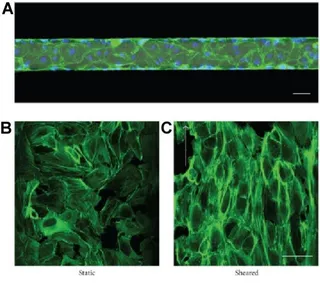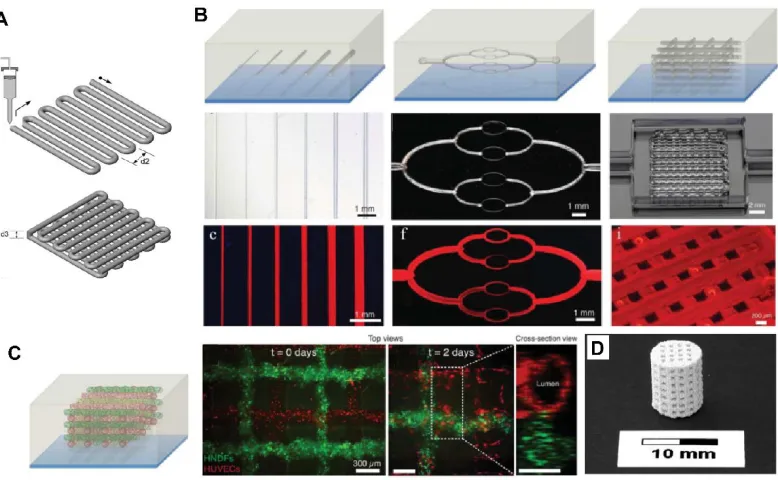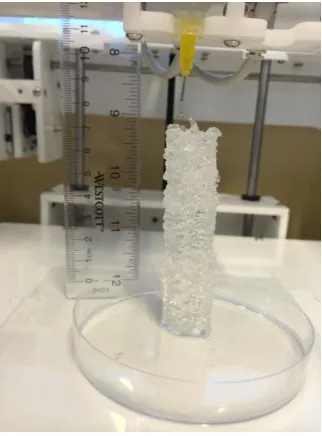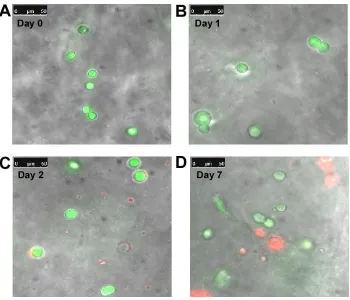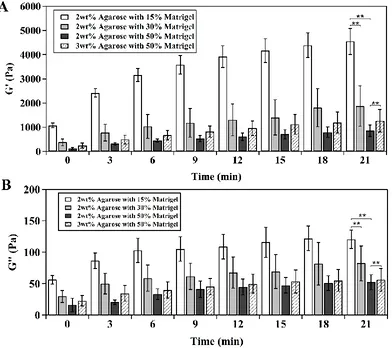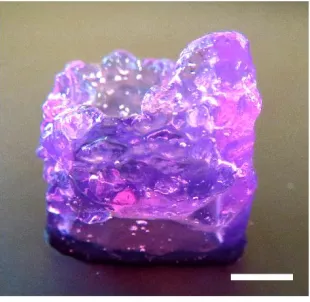Cell Dynamics in Three-dimensional (3D) Culture Environments
Full text
Figure
![Figure 1 Diagram of cell cycle showing different phases of cell dynamics [4].](https://thumb-us.123doks.com/thumbv2/123dok_us/68361.6442/27.612.129.519.82.450/figure-diagram-cell-cycle-showing-different-phases-dynamics.webp)
![Figure 2 Physical, biochemical and physicochemical factors are presented within in vivo cell microenvironment [19]](https://thumb-us.123doks.com/thumbv2/123dok_us/68361.6442/30.612.135.513.403.640/figure-physical-biochemical-physicochemical-factors-presented-vivo-microenvironment.webp)
![Figure 3 Schematics shows the difference of cells growing in 2D and 3D environment [35]](https://thumb-us.123doks.com/thumbv2/123dok_us/68361.6442/32.612.187.464.263.627/figure-schematics-shows-difference-cells-growing-d-environment.webp)
![Figure 7 Microfluidic technique for 3D cell culture in microparticles. (A) Schematics of microfluidic encapsulation of cells in microparticles (Scale bar: 100 µm) [92]](https://thumb-us.123doks.com/thumbv2/123dok_us/68361.6442/42.612.173.475.239.465/figure-microfluidic-technique-microparticles-schematics-microfluidic-encapsulation-microparticles.webp)
Outline
Related documents
The DE analysis is then applied to study three different classes of GPCs: spatially-coupled PCs, symmetric GPCs, and GPCs based on component code mixtures.. Keywords:
The Z-test statistics was employed to test the hypotheses at 0.05 level of significance and the findings revealed that romantic relationship, lack of interest in learning,
The basic training OpenScape Business S is a course for service personnel and Administrator for data center, with good knowledge of virtual machines (VMware), LAN/WAN, Unify
(2) If a manufacturer fails to keep a stock-book in the manner approved in terms of subsection (1), any rebated goods received by the manufacturer during the period when
High levels of PKC activation by PDBu increased the contractile responses of bladder strips to EFS by shifting the frequency response curve to the left (Figures 2 and 7), and
The following specific conditions apply to the delivery of special service, accountable mail (Registered Mail, Certified Mail, USPS Tracking, mail insured for more than
Transverse section of stem explants CRWS at lower magnification, showed dense blue endophytic colonies scattered around the epidermis, endodermis, cortex and
The effect of pH on the adsorption of four classes of dyes namely acid dye (Acid blue 49), basic dye (Basic red 29), reactive dye (Reactive orange 4) & direct dye (Direct blue
